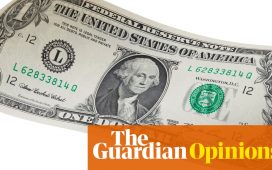The writer, former counsel at the Federal Reserve Bank of New York and the IMF, is Edward Cornell professor of law at Cornell Law School
One of the crowning ironies of the collapse of Silicon Valley Bank is that it was, by and large, doing what we want banks to do — lending to productive industries and managing its asset portfolio prudently. SVB lent to promising start-up companies, while investing its non-loan holdings in the safest assets there are: US Treasury securities.
For well over 50 years now, US Treasuries have been the “gold standard” in both the American and global financial markets. They never default, and they pay guaranteed returns well in excess of the minimal interest that individuals and businesses earn on their bank deposits. Banks’ profits derive from the “spread” between low-interest borrowings — that is, client deposits — and higher-yield investments — in SVB’s case, Treasuries.
But any business or individual in America can already invest directly in Treasuries, through web-accessible personal accounts held at the Treasury. The aptly named TreasuryDirect system already cuts out the middleman by enabling anyone, to open an account at the Treasury in minutes. In effect, this is e-banking with the US’s own Treasury — a means by which individuals’ treasuries become part of the national one.
But why doesn’t everyone do this? I think it’s due to a certain cumbersomeness in the TreasuryDirect digital architecture — an issue that Treasury secretary Janet Yellen could resolve with the stroke of a pen.
Apart from the need for a social security number, the sole impediment to TreasuryDirect’s operating as a universally accessible savings and payments platform right now is the fact that to use it one must also maintain a separate account at a bank, out of which one can pay for Treasuries at TreasuryDirect, and into which one can receive cash on redemption of those securities.
Three years ago, when the US was looking for ways quickly to get money into the hands of its citizens locked down by Covid-19, I contacted officials both at the Treasury and at the US Digital Service (USDS). How long, I asked, would it take to convert the current system of web-accessible TreasuryDirect accounts into a nationwide network of smartphone-accessible digital wallets for all citizens and businesses in America.
The answer? About three months. Within a matter of months, all American citizens and businesses could have interest-bearing digital savings and transaction accounts on their phones and all similar devices. This information formed the basis for the “Digital Greenbacks” plan that I then developed — in honour of our nation’s first paper currency, which for its first 50 years was issued not by the Federal Reserve, but by the Treasury.
Think about some of the transformative changes that this simple expedient would make to our banking, commerce and finance. For a start, the problem of America’s “unbanked” and “underbanked” would be solved more or less overnight. Moreover, banking would be safe for all — both because Treasuries never default and because we’d need no middleman to stand between us and our investments. And, also thanks to cutting out the middlemen, these digital Treasury bank accounts, provided they are held to maturity, would pay far more interest than ordinary bank accounts do.
Finally, by facilitating and speeding up transactions, TreasuryDirect wallets would accelerate economic growth — for our principal measure of growth, gross domestic product, takes transaction volume as its denominator.
President Joe Biden is often said to be dead-set on outdoing his former boss, Barack Obama. One way he could do this is to set USDS the task of safely and remuneratively banking all businesses and individuals in America, thereby enabling all of us to share in the nation’s annually growing wealth.









